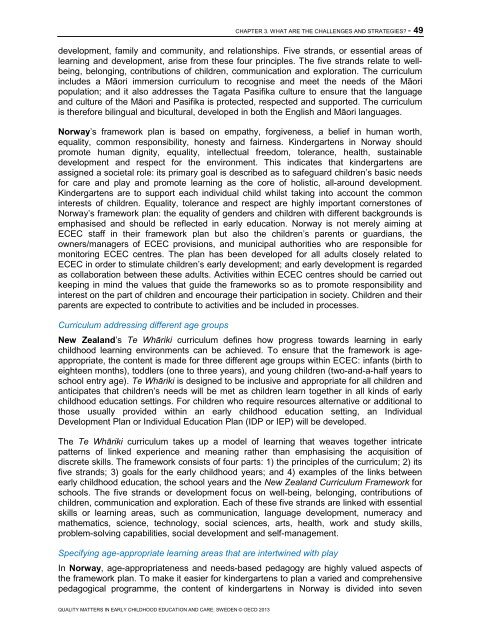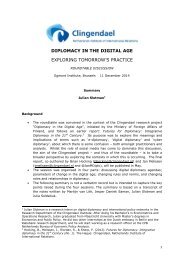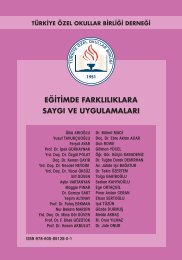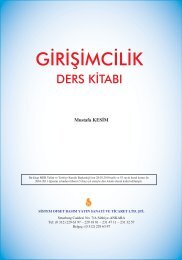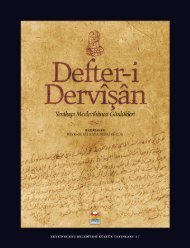SWEDEN%20policy%20profile%20-%20published%2005-02-2013
SWEDEN%20policy%20profile%20-%20published%2005-02-2013
SWEDEN%20policy%20profile%20-%20published%2005-02-2013
You also want an ePaper? Increase the reach of your titles
YUMPU automatically turns print PDFs into web optimized ePapers that Google loves.
QUALITY MATTERS IN EARLY CHILDHOOD EDUCATION AND CARE: SWEDEN © OECD <strong>2013</strong><br />
CHAPTER 3. WHAT ARE THE CHALLENGES AND STRATEGIES? - 49<br />
development, family and community, and relationships. Five strands, or essential areas of<br />
learning and development, arise from these four principles. The five strands relate to wellbeing,<br />
belonging, contributions of children, communication and exploration. The curriculum<br />
includes a Māori immersion curriculum to recognise and meet the needs of the Māori<br />
population; and it also addresses the Tagata Pasifika culture to ensure that the language<br />
and culture of the Māori and Pasifika is protected, respected and supported. The curriculum<br />
is therefore bilingual and bicultural, developed in both the English and Māori languages.<br />
Norway’s framework plan is based on empathy, forgiveness, a belief in human worth,<br />
equality, common responsibility, honesty and fairness. Kindergartens in Norway should<br />
promote human dignity, equality, intellectual freedom, tolerance, health, sustainable<br />
development and respect for the environment. This indicates that kindergartens are<br />
assigned a societal role: its primary goal is described as to safeguard children’s basic needs<br />
for care and play and promote learning as the core of holistic, all-around development.<br />
Kindergartens are to support each individual child whilst taking into account the common<br />
interests of children. Equality, tolerance and respect are highly important cornerstones of<br />
Norway’s framework plan: the equality of genders and children with different backgrounds is<br />
emphasised and should be reflected in early education. Norway is not merely aiming at<br />
ECEC staff in their framework plan but also the children’s parents or guardians, the<br />
owners/managers of ECEC provisions, and municipal authorities who are responsible for<br />
monitoring ECEC centres. The plan has been developed for all adults closely related to<br />
ECEC in order to stimulate children’s early development; and early development is regarded<br />
as collaboration between these adults. Activities within ECEC centres should be carried out<br />
keeping in mind the values that guide the frameworks so as to promote responsibility and<br />
interest on the part of children and encourage their participation in society. Children and their<br />
parents are expected to contribute to activities and be included in processes.<br />
Curriculum addressing different age groups<br />
New Zealand’s Te Whāriki curriculum defines how progress towards learning in early<br />
childhood learning environments can be achieved. To ensure that the framework is ageappropriate,<br />
the content is made for three different age groups within ECEC: infants (birth to<br />
eighteen months), toddlers (one to three years), and young children (two-and-a-half years to<br />
school entry age). Te Whāriki is designed to be inclusive and appropriate for all children and<br />
anticipates that children’s needs will be met as children learn together in all kinds of early<br />
childhood education settings. For children who require resources alternative or additional to<br />
those usually provided within an early childhood education setting, an Individual<br />
Development Plan or Individual Education Plan (IDP or IEP) will be developed.<br />
The Te Whāriki curriculum takes up a model of learning that weaves together intricate<br />
patterns of linked experience and meaning rather than emphasising the acquisition of<br />
discrete skills. The framework consists of four parts: 1) the principles of the curriculum; 2) its<br />
five strands; 3) goals for the early childhood years; and 4) examples of the links between<br />
early childhood education, the school years and the New Zealand Curriculum Framework for<br />
schools. The five strands or development focus on well-being, belonging, contributions of<br />
children, communication and exploration. Each of these five strands are linked with essential<br />
skills or learning areas, such as communication, language development, numeracy and<br />
mathematics, science, technology, social sciences, arts, health, work and study skills,<br />
problem-solving capabilities, social development and self-management.<br />
Specifying age-appropriate learning areas that are intertwined with play<br />
In Norway, age-appropriateness and needs-based pedagogy are highly valued aspects of<br />
the framework plan. To make it easier for kindergartens to plan a varied and comprehensive<br />
pedagogical programme, the content of kindergartens in Norway is divided into seven


